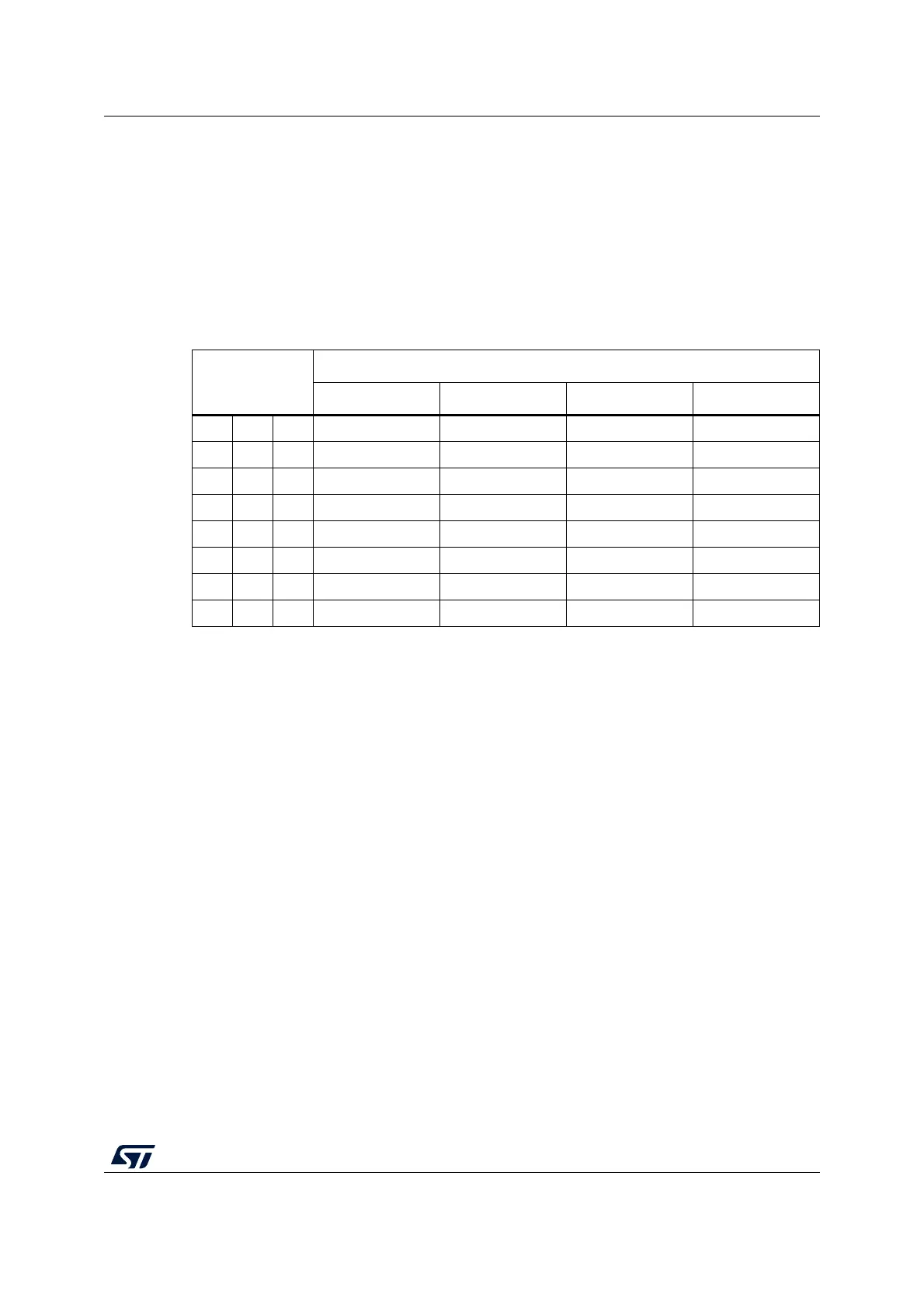RM0367 Rev 7 395/1043
RM0367 Liquid crystal display controller (LCD)
413
Blink
The segment driver also implements a programmable blink feature to allow some pixels to
continuously switch on at a specific frequency. The blink mode can be configured by the
BLINK[1:0] bits in the LCD_FCR register, making possible to blink up to 1, 2, 4, 8 or all
pixels (see Section 17.7.2: LCD frame control register (LCD_FCR)). The blink frequency
can be selected from eight different values using the BLINKF[2:0] bits in the LCD_FCR
register.
Table 75 gives examples of different blink frequencies (as a function of ck_div frequency).
17.4.5 Voltage generator and contrast control
LCD supply source
The LCD power supply source may come from either the internal step-up converter or from
an external voltage applied on the VLCD pin. Internal or external voltage source can be
selected using the VSEL bit in the LCD_CR register. In case of external source selected, the
internal boost circuit (step-up converter) is disabled to reduce power consumption.
When the step-up converter is selected as V
LCD
source, the V
LCD
value can be chosen
among a wide set of values from V
LCDmin
to V
LCDmax
by means of CC[2:0] (Contrast
Control) bits inside LCD_FCR (see Section 17.7.2) register. New values of V
LCD
takes effect
every beginning of a new frame.
When external power source is selected as V
LCD
source, the V
LCD
voltage must be chosen
in the range of V
LCDmin
to V
LCDmax
(see datasheets). The contrast can then be controlled by
programming a dead time between frames (see Deadtime on page 398).
Table 75. Blink frequency
BLINKF[2:0]
bits
ck_div frequency (with LCDCLK
frequency of 32.768 kHz)
32 Hz 64 Hz 128 Hz 256 Hz
0 0 0 4.0 Hz N/A N/A N/A
0 0 1 2.0 Hz 4.0 Hz N/A N/A
0 1 0 1.0 Hz 2.0 Hz 4.0 Hz N/A
0 1 1 0.5Hz 1.0Hz 2.0Hz 4.0Hz
1 0 0 0.25 Hz 0.5 Hz 1.0 Hz 2.0 Hz
1 0 1 N/A 0.25 Hz 0.5 Hz 1.0 Hz
1 1 0 N/A N/A 0.25 Hz 0.5 Hz
1 1 1 N/A N/A N/A 0.25 Hz

